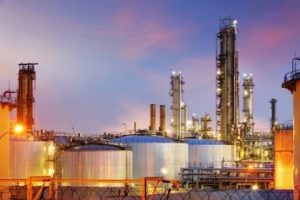The EPA has issued a stay of several requirements of its New Source Performance Standards (NSPS) for the oil and natural gas (O&G) industry (June 3, 2016, FR). The stay responds to objections to the rule raised by the sector and is intended to provide the Agency time to reconsider the merits of the objections.

The 2016 rule established NSPS for emissions of greenhouse gases (GHGs) and volatile organic compounds and included requirements to control fugitive emissions at well sites and compressor station sites, as well as emissions from pneumatic pumps. In addition, for a number of affected facilities (i.e., centrifugal compressors, reciprocating compressors, pneumatic pumps, and storage vessels), the rule requires that a professional engineer (PE) certify the closed vent system design and capacity, as well as any technical infeasibility determination relative to controlling pneumatic pumps at well sites.
Absent in Proposal
The formal stay and notice of reconsideration follows the Agency’s announcement in an April 18, 2017, letter that responded to industry objections to the above requirements because they were not included or not adequately described in EPA’s proposed O&G NSPS. EPA’s letter informed the petitioners that the Agency would prepare a proposal discussing these requirements, thereby providing the public the opportunity to comment that was not provided in the initial proposal. The current notice imposes the 90-day stay on the effectiveness of the pneumatic pump requirements at well sites, as well as the requirements for PE certifications.
Fugitive Emissions
Also stayed are the final rule’s requirements pertaining to fugitive emissions at well sites and compressor station sites. In the proposal for its final rule, the EPA said it wished to exempt low-production well sites from the fugitive emissions requirements, stating that the lower production associated with these wells would generally result in lower fugitive emissions.
The Agency states that the final rule differs significantly from what was proposed. Among other things, the final rule included a process and criteria for requesting and receiving approval for the use of an alternative means of emission limitations (AMEL) for purposes of compliance with the fugitive emissions requirements. The Agency now says that the AMEL process and criteria were included in the 2016 rule without having been proposed for notice and comment.
“These AMEL provisions were added to encourage the development and use of innovative technology, in particular for fugitive emissions monitoring,” says the EPA. “However, issues and questions raised in the administrative petitions for reconsideration (e.g., who can apply for and who can use an approved AMEL) suggest that sources may have difficulty understanding and applying for AMEL.”
The Agency’s prepublication notice of reconsideration and partial stay is here.
